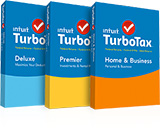 Michigan Farmland Preservation Tax Credit
Michigan Farmland Preservation Tax Credit
Extracted from PDF file 2024-michigan-form-4594.pdf, last modified December 1969Farmland Preservation Tax Credit
Content not available
Form 4594
More about the Michigan Form 4594 Corporate Income Tax Tax Credit TY 2024
We last updated the Farmland Preservation Tax Credit in March 2025, so this is the latest version of Form 4594, fully updated for tax year 2024. You can download or print current or past-year PDFs of Form 4594 directly from TaxFormFinder. You can print other Michigan tax forms here.
eFile your Michigan tax return now 
eFiling is easier, faster, and safer than filling out paper tax forms. File your Michigan and Federal tax returns online with TurboTax in minutes. FREE for simple returns, with discounts available for TaxFormFinder users!
File Now with TurboTaxOther Michigan Corporate Income Tax Forms:
TaxFormFinder has an additional 97 Michigan income tax forms that you may need, plus all federal income tax forms.
| Form Code | Form Name |
|---|---|
| Form MI W-4P | Withholding Certificate for Michigan Pension or Annuity Payments |
| Form 4891 | CIT Annual Return |
| Form 4892 | CIT AMENDED Annual Return |
| Form 4763 | E-file Authorization for Business Taxes MI-8879 (OBSOLETE) |
| Form 4918 | Annual Flow-Through Withholding Reconciliation Return (OBSOLETE) |
 View all 98 Michigan Income Tax Forms
View all 98 Michigan Income Tax Forms
Form Sources:
Michigan usually releases forms for the current tax year between January and April. We last updated Michigan Form 4594 from the Department of Treasury in March 2025.
Form 4594 is a Michigan Corporate Income Tax form. States often have dozens of even hundreds of various tax credits, which, unlike deductions, provide a dollar-for-dollar reduction of tax liability. Some common tax credits apply to many taxpayers, while others only apply to extremely specific situations. In most cases, you will have to provide evidence to show that you are eligible for the tax credit, and calculate the amount of the credit to which you are entitled.
About the Corporate Income Tax
The IRS and most states require corporations to file an income tax return, with the exact filing requirements depending on the type of company.
Sole proprietorships or disregarded entities like LLCs are filed on Schedule C (or the state equivalent) of the owner's personal income tax return, flow-through entities like S Corporations or Partnerships are generally required to file an informational return equivilent to the IRS Form 1120S or Form 1065, and full corporations must file the equivalent of federal Form 1120 (and, unlike flow-through corporations, are often subject to a corporate tax liability).
Additional forms are available for a wide variety of specific entities and transactions including fiduciaries, nonprofits, and companies involved in other specific types of business.
Historical Past-Year Versions of Michigan Form 4594
We have a total of fourteen past-year versions of Form 4594 in the TaxFormFinder archives, including for the previous tax year. Download past year versions of this tax form as PDFs here:
4594, Michigan Farmland Preservation Tax Credit
4594, 2020 Michigan Farmland Preservation Tax Credit
2019 Michigan Farmland Preservation Tax Credit
4595, 2018 MICHIGAN Farmland Preservation Tax Credit
4594, 2017 Michigan Farmland Preservation Tax Credit
4594, 2016 Michigan Farmland Preservation Tax Credit
Form 4594, 2011 Michigan Farmland Preservation Tax Credit
TaxFormFinder Disclaimer:
While we do our best to keep our list of Michigan Income Tax Forms up to date and complete, we cannot be held liable for errors or omissions. Is the form on this page out-of-date or not working? Please let us know and we will fix it ASAP.
